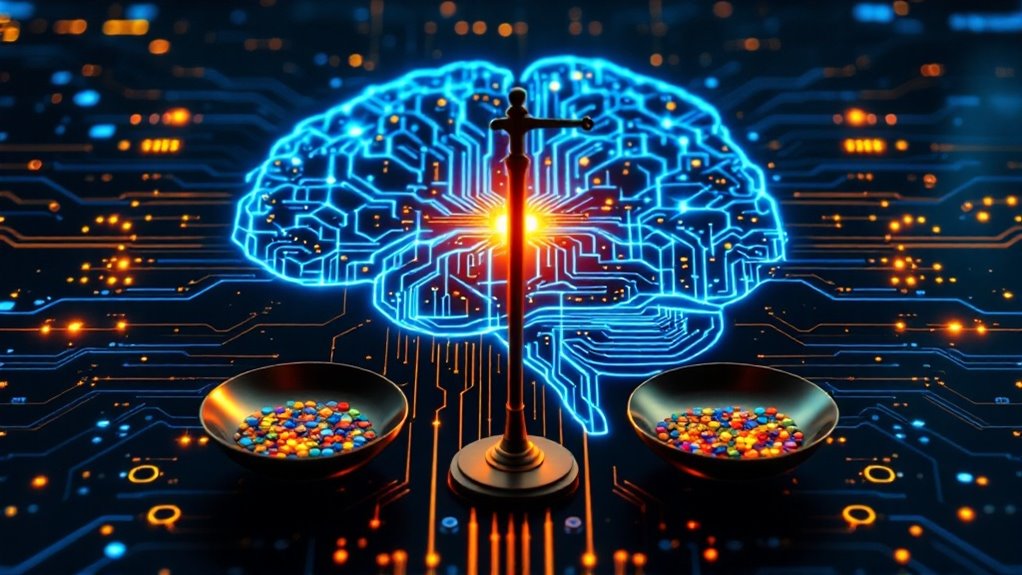Ethical AI creates systems that don’t perpetuate societal biases—easier said than done! Developers must diversify training data, implement fairness-aware algorithms, and crack open those mysterious “black boxes” through explainable AI techniques. When facial recognition fails on darker skin tones or loan algorithms discriminate, it’s not just a technical glitch—it’s reinforcing inequality. Building truly ethical AI requires both technical solutions and organizational cultures that prioritize fairness. The journey toward AI that treats everyone fairly continues beyond the code.
While the promises of artificial intelligence continue to dazzle us with each new breakthrough, the shadow of algorithmic bias looms increasingly large over our digital future. These systems, clever as they may be, have an uncanny knack for inheriting and amplifying the prejudices baked into their training data. Think your AI is objective? Think again. When algorithms start rejecting loan applications or influencing sentencing decisions along demographic lines, we’ve got more than just a technical glitch on our hands.
The roots of AI bias are maddeningly complex. Sometimes it’s the data—skewed, unrepresentative collections that teach machines a distorted view of reality. Other times, it’s the humans behind the curtain, making choices about what data matters and how it should be labeled. Either way, the consequences ripple through society like a digital game of telephone, where the message gets progressively warped. Criminal justice systems using AI for predictive policing have shown systematic biases that disproportionately affect marginalized communities.
AI bias: where algorithms learn our prejudices and return them with compound interest.
Fairness doesn’t happen by accident. It requires deliberate design choices and vigilant monitoring. Developers are increasingly turning to fairness-aware algorithms that can spot and minimize disparate impacts across different groups. The EU’s AI Act has stepped into this arena with regulatory guidance, particularly for high-risk applications. Because nothing says “we should probably be careful” quite like algorithms determining who gets housing, healthcare, or employment. A truly ethical approach to AI development requires risk mitigation strategies that consider both immediate and long-term societal impacts.
Data diversity is non-negotiable for ethical AI systems. When facial recognition software fails to accurately identify people with darker skin tones, that’s not just a technical fail—it’s a diversity problem in the training data. Augmentation techniques can help balance datasets, but regular auditing remains essential to catch biases that might emerge after deployment. Studies have shown that many facial recognition algorithms exhibit higher error rates for individuals with darker skin tones, highlighting the critical need for diverse training data.
The infamous “black box” problem doesn’t help matters. How can we address bias in systems we can’t fully explain? Explainable AI methods are gaining traction, offering windows into these decision-making processes. This transparency isn’t just about technical documentation—it’s about building trust in a world increasingly mediated by algorithms.
Organizations serious about ethical AI need to bake these values into their culture. Because let’s face it: all the fairness metrics in the world won’t matter if the humans building the systems don’t care.









